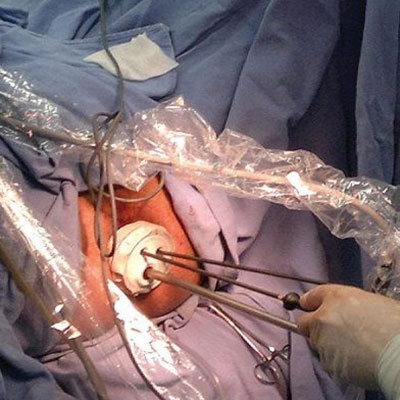
Prof. Dr. DulalKanti Majumder
Senior Consultant Urologist, Laparoscopic, Pelvic & Oncosurgeon
For Appointment Call :
+91 9830063492Email Me On :
doctordkm@gmail.com

Senior Consultant Urologist, Laparoscopic, Pelvic & Oncosurgeon


Pelvic surgery is a broad term that refers to surgical procedures performed in the pelvic area, the majority of which are gynecologic operations.
In general, there are two types of surgery: 1) obliterative surgery and 2) reconstructive surgery. How does obliterative surgery treat pelvic organ prolapse? Obliterative surgery narrows or closes off the vagina to provide support for prolapsed organs. Sexual intercourse is not possible after this procedure.
How long is pelvic surgery recovery?
You can expect to feel better and stronger each day. But you may get tired quickly and need pain medicine for a week or two. You may need about 4 to 6 weeks to fully recover from open surgery and 1 to 2 weeks to recover from laparoscopic surgery or vaginal surgery.
Is pelvic surgery painful?
A minimally invasive procedure causes less damage, but some pain is inevitable. Pain after minimally invasive surgery might last only a few weeks, sometimes even less. For more major surgeries, pain could last several months.
Can you walk after pelvic surgery?
After pelvic fracture surgery, patients are not allowed to bear weight or walk for six to 10 weeks. You will be taught by physical therapy to use crutches or a walker before leaving the hospital. Your doctor may decide to put you on a blood thinner after surgery for 2-6 weeks depending on your risk factors.
How successful is pelvic surgery?
The aim of the surgery is to relieve the symptoms of vaginal bulging / laxity and to improve bowel function, without interfering with sexual function. Success rates for posterior repair are 80-90%, however there is a chance that the prolapse may recur or another part of the vaginal wall may prolapse.
What is pelvic surgery called?
Pelvic laparoscopy is surgery to examine pelvic organs. It uses a viewing tool called a laparoscope. The surgery is also used to treat certain diseases of the pelvic organs.
How is pelvic surgery done?
The treatment of pelvic organ prolapse may be approached via the vaginal or the abdominal route. Surgeries performed through the vaginal route include colporrhaphy and fixation of the vagina to the sacral ligaments. Colporrhaphy involves plication of the muscular layer, making the vaginal canal smaller.
Can you sit after pelvic surgery?
Rest when you need to - on busy days sit or lie down every few hours. You can shower but wait a week before you have a bath and gently pat the incision dry. Use sanitary pads if needed - any bleeding should stop within four weeks. Wear loose clothing that doesn't put pressure on your belly for a few weeks.
Where is pelvic area located?
The pelvis is the area of the body below the abdomen that is located between the hip bones and contains the bladder and rectum. In females, it also contains the vagina, cervix, uterus, fallopian tubes, and ovaries. In males, it also contains the prostate and seminal vesicles.
Is a broken pelvis serious?
A mild fracture (such as may happen from the impact of jogging) may heal in several weeks without surgery. However, a serious pelvic fracture can be life-threatening and may involve damage to the organs the pelvis protects.
How do you poop after pelvic surgery?
The correct technique for your bowel movement after prolapse surgery is the 'Brace and Bulge' Technique. Brace your abdominal muscles to by making the sound “m” or “s”. This action makes your waist wider and provides pushing force for your bowel movement.
Laparoscopy is a type of surgical procedure that allows a surgeon to access the inside of the abdomen (tummy) and pelvis without having to make large incisions in the skin. This procedure is also known as keyhole surgery or minimally invasive surgery.